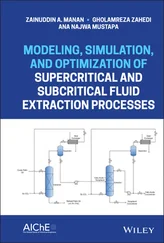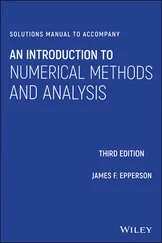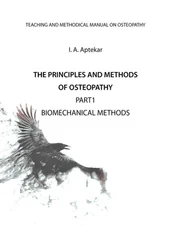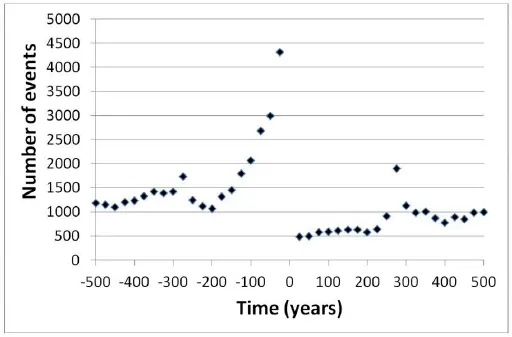
Figure 2.10. Stacked number of M3.0+ events in the 500 years period before and after an M6.0+ mainshock in a 100 kyrs simulated catalog of Calabria region (based on Console et al . 2017)

Figure 2.11. Probability (%) of exceedance of PGA = 0.2 g in 50 years in the Calabria region, obtained from the method described in the text (based on Console et al . 2017)
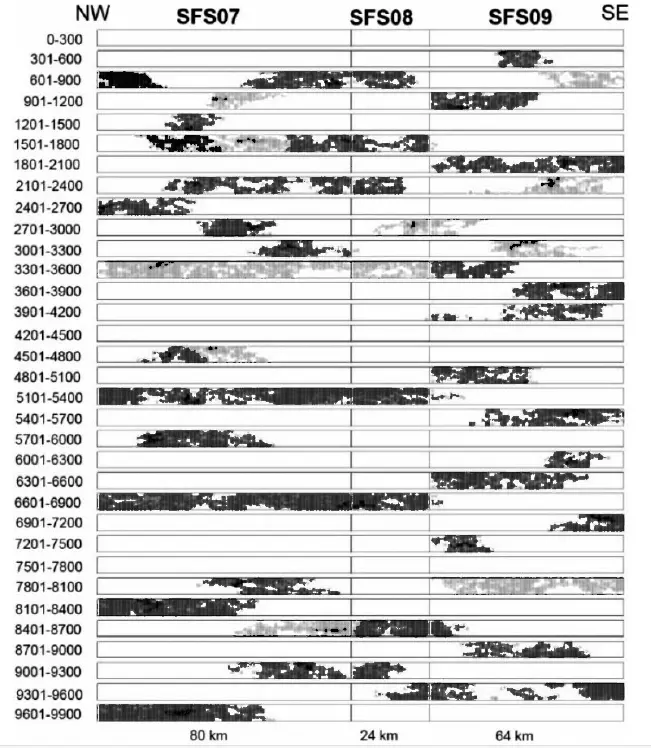
Figure 2.12. Map of ruptures for M ≥ 6.0 earthquakes on the joint set of three faults of the 24 adopted in the model, in 33 time windows of 300 years represented from top to bottom. The 170 km long fault system is displayed in each panel from left to right moving from NW to SE (Figure 1 of Console et al . (2018a)). On any panel, the level of darkness represents the temporal order of earthquake occurrence, and the amount of slip on multiply ruptured cells (based on Console et al . (2018a))
In Figure 2.12, excluding the events with a magnitude smaller than 6.0, all the larger earthquakes are represented by the cells of 1 × 1 km ruptured in each of them. Each panel from the top to the bottom of the picture shows the events occurred in separate time windows of 300 years with different tones of gray for each earthquake in the same time window. The scale of gray darkness represents the order by which the events nucleated in each panel of 300 years, from the lightest to the darkest, respectively. Multiple ruptures on the same cell in a unique earthquake are represented by darker tones.
By examining Figure 2.12, we note that only three 300 years periods of 33 were lacking any M ≥ 6.0 earthquake, while only two of the other periods contain three earthquakes of such magnitude. There is a clear trend for earthquakes not to occupy the same rupture areas in the same time window, or in consecutive time windows, while they are mostly separated from each other by more than 300 years of several time windows. During the whole test of 10,000 years, every portion of the 170 km long fault system was occupied by at least six or seven ruptures in distinct earthquakes, and none of them was left empty. This is consistent with the recurrence time of 500–1,000 years characterizing the three faults considered in this test.
From the results of this exercise (see Figure 2.12), we can infer that the segmentation scheme mainly based on historical records of earthquakes occurred during the latest centuries could have likely been conditioned by the particular pattern of ruptures exhibited by a group of sources in this relatively recent time window.
2.3.6. Further improvements of the simulator code (2019)
In the last version of the simulator, we introduced new features with the aim of achieving a more realistic physical modeling of the seismic process and a better similarity between real and synthetic catalogs. The first improvement in the new version of the algorithm is the modeling of the geometry of the seismic source by a trapezoidal shape, of which the old rectangles are a limit case. The rationale of this change is to allow a more accurate modeling of curve seismogenic structures, as described in the previous section, avoiding gaps between adjacent rectangular faults with different strikes. In the numerical application, the discretization of the trapezoidal shapes of the faults in square cells is obtained by retaining only the cells the centers of which are inside the trapeze edges. Note that modeling the seismic sources by numerous faults of rectangular or trapezoidal shape is just a convenient tool for the simplicity of the algorithm used in the physics-based simulator code, but in no way does it constitute a limitation to stop a rupture at the edges of such faults.
Then, we modified the algorithm for event nucleation, making use of the method described by Toda et al . (1998, 2005), based on the rate-and-state constitutive law introduced by Dieterich (1994). Here, in the following, are the basic principles of the model. Every cell of the fault system is characterized by the instantaneous value of its state variable γ . The expected rate r of failure of each cell in a population of a large number of identical cells is inversely proportional to γ as
[2.1] 
where γ 0and r 0are the unperturbed steady-state values of γ and r. Here r 0is the rate of events of magnitude exceeding the threshold adopted in the simulation. It is obtained by dividing the slip rate of each fault segment in the seismogenic model by the slip pertaining to an event of average magnitude, assuming a G-R magnitude distribution with b = 1, for events of magnitude exceeding the threshold. Every cell changes its stress status and consequently the values of γ and r when an event occurs not very far in the fault system. The coseismic Coulomb stress change ΔCFF on the receiving cell is computed by:
[2.2] 
where Δ τ and Δ σn are, respectively, the shear and the normal components of the stress change tensor inverted according to the focal mechanism of the receiver fault, and μ′ is the effective coefficient of friction, assumed equal to 0.4. Note that equation [2.2]is computed adding the contribution of all cells ruptured in the causative event, with their respective coseismic slip. According to the rate-and-state model (Toda et al . 1998, 2005), the rate r′ of failure after a time t from the causative event for the receiving cell is given by:
[2.3] 
where r 0is the background rate introduced in equation [2.1], r is the rate of failure just before the causative event, Aσ is a constant parameter of the constitutive law and ta is the characteristic decay time given by:
[2.4] 
where  is the stress rate (proportional to the slip rate) relative to the fault segment to which the receiving cell belongs. After an event is stored in the output synthetic catalog, the simulator code makes use of equation [2.3]to define the coordinates and occurrence time of a cell where the next event will be nucleated, in the following iterative way. An updated flow chart of this procedure is shown in Figure 2.13.
is the stress rate (proportional to the slip rate) relative to the fault segment to which the receiving cell belongs. After an event is stored in the output synthetic catalog, the simulator code makes use of equation [2.3]to define the coordinates and occurrence time of a cell where the next event will be nucleated, in the following iterative way. An updated flow chart of this procedure is shown in Figure 2.13.
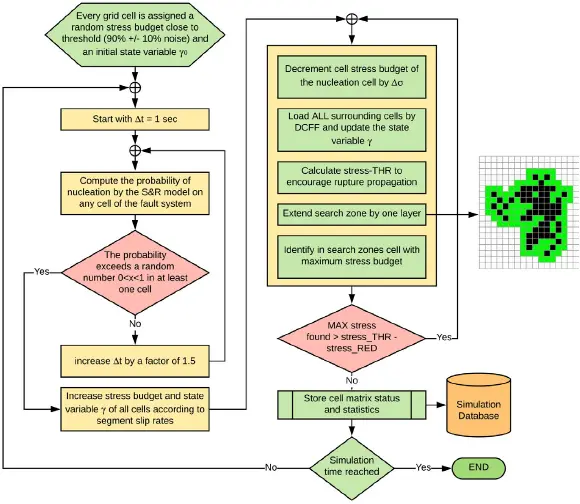
Figure 2.13. Flow chart of the computer code for earthquake simulation with rate-and-state constitutive law nucleation mechanism. S&R: rate-state dependent friction; DCFF: Coulomb failure function change; THR: threshold; RED: reduction. For a color version of this figure, see www.iste.co.uk/limnios/statistical.zip
Читать дальше
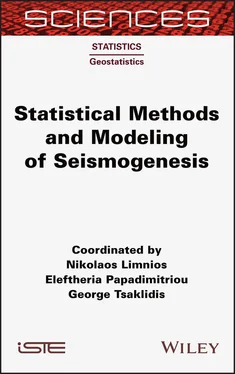







 is the stress rate (proportional to the slip rate) relative to the fault segment to which the receiving cell belongs. After an event is stored in the output synthetic catalog, the simulator code makes use of equation [2.3]to define the coordinates and occurrence time of a cell where the next event will be nucleated, in the following iterative way. An updated flow chart of this procedure is shown in Figure 2.13.
is the stress rate (proportional to the slip rate) relative to the fault segment to which the receiving cell belongs. After an event is stored in the output synthetic catalog, the simulator code makes use of equation [2.3]to define the coordinates and occurrence time of a cell where the next event will be nucleated, in the following iterative way. An updated flow chart of this procedure is shown in Figure 2.13.




